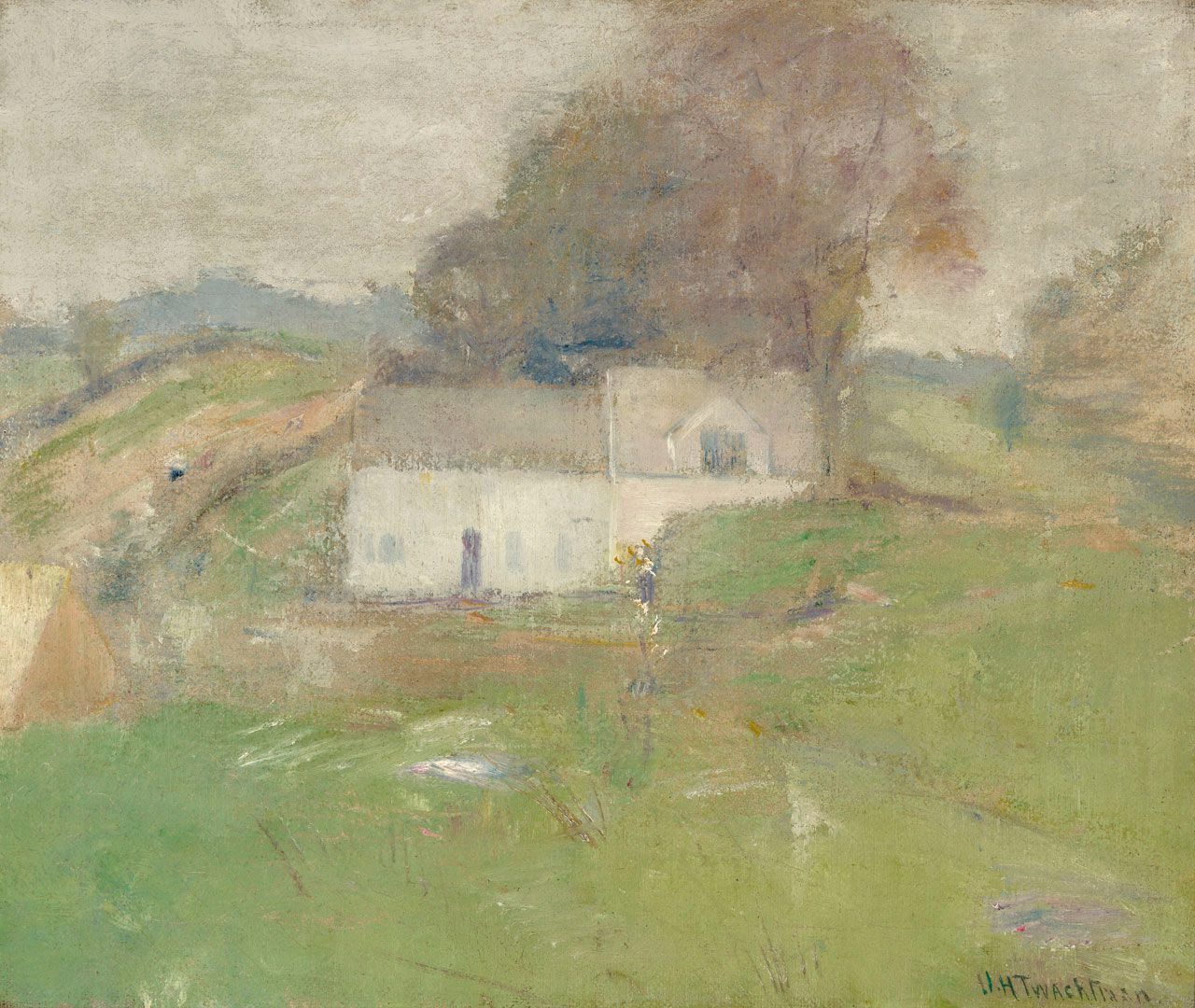Note
User Text: This painting depicts the north façade of John Twachtman’s house on Round Hill Road in Greenwich, Connecticut, shortly before the artist renovated it. He portrayed his seventeen-acre property and its architecture often, depicting not only his house and barn, but Horseneck Brook and its falls, and trees in spring and winter. Twachtman originally intended to build a larger house on top of the hill, but found that this house was perfectly situated and decided instead to renovate the existing structure and bring it into harmony with the landscape.1
Born in Cincinnati, Twachtman began art study at the Ohio Mechanics Institute and the McMicken School of Design. He enrolled at the Munich Royal Academy in 1875, studying under Ludwig von Löfftz and also Frank Duveneck, adopting the vigor¬ous brushwork and dark tonalities of the Munich school. He returned to Europe multiple times in the early 1880s, and from 1883 to 1885 studied in Paris at the Académie Julian. In Paris, he became well acquainted with other future members of the American Impressionist group that would come to be known as The Ten.
Twachtman became enamored of Connecticut through visits to the farm of fellow American Impressionist J. Alden Weir. In 1890, he purchased this house and three acres of rural land; the following year he purchased additional acreage. In the twelve years he lived in Greenwich, Twachtman emerged as one of America’s leading Impressionists. His style continued to evolve, becoming increasingly tonal, expressive, and abstract. Closely associated with other artists in the region, including Weir, Theodore Robinson, and Childe Hassam, he frequently joined them in plein-air painting sessions. Twachtman taught and painted until his early death in 1902.
1 From letter, John Twachtman, “Willowbrook,” to J. Alden Weir, circa fall 1889. Archives, Weir Farm National Historic Site, Wilton, Connecticut, WEFA 350. Lisa N. Peters graciously provided assistance in writing this entry.
